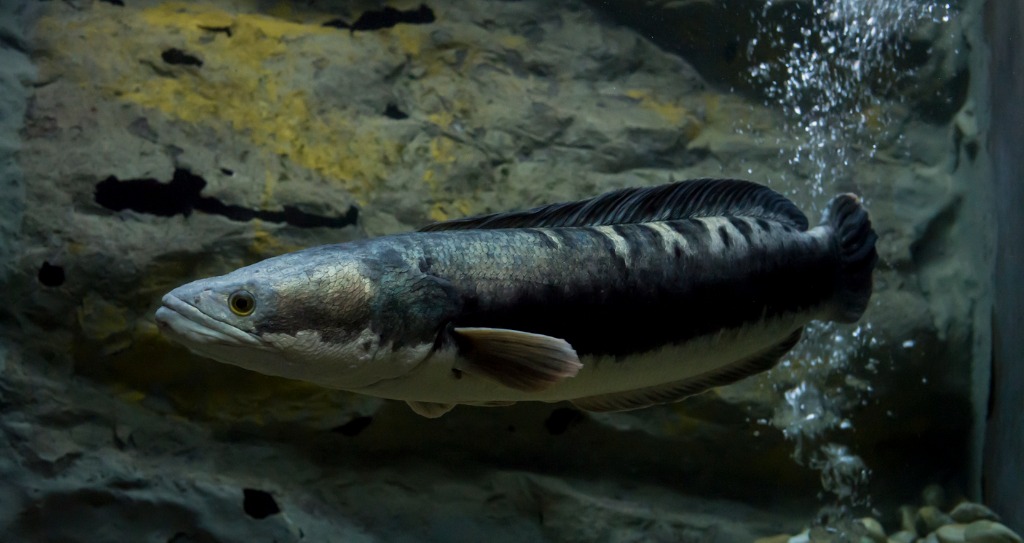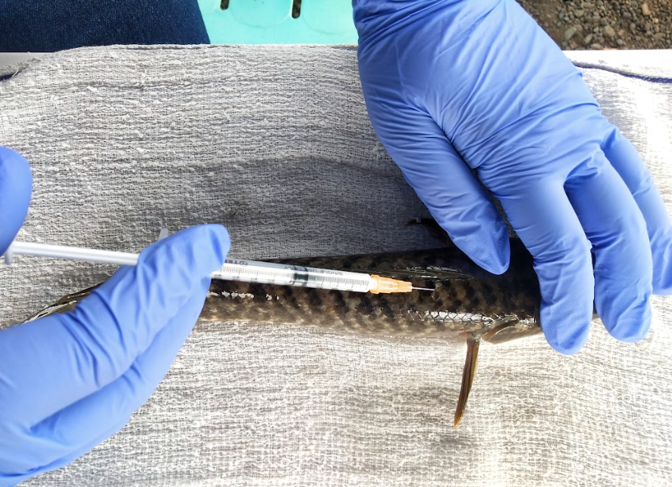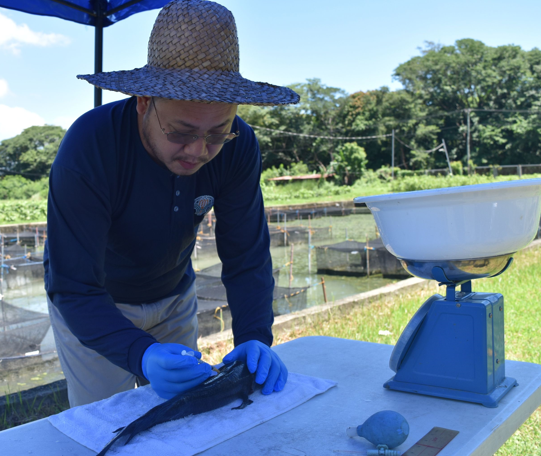Induced Spawning Technology for the Future of Aquaculture
| |
Mudfish is found in the Philippines, as well as in other parts of Asia and the world. However, the potential of this fish to improve people’s lives and livelihood haven't been taken advantage of. They are a rich source of protein and sustainable income.
Researchers from the Department of Agriculture - Fisheries Biotechnology Center (DA-FBC) shared their project about Mudfish Spawning Technology and its economic opportunities during a one-day hybrid seminar organized by ISAAA Inc., in partnership with the Department of Agriculture-Philippine Agriculture and Fisheries Biotechnology Program (DA Biotech) and DA-Fisheries Biotech Center.
The Pinoy Biotek Seminar: Mudfish Spawning Technology event was held on September 1, 2023, at the Philippine Carabao Center National Headquarters and Gene Pool in the Science City of Muñoz, Nueva Ecija. This article highlights the essential points that were discussed during the seminar.

The essence of mudfish
Mudfish or dalag used to be a common type of fish in the Philippines. However, their population has dwindled because people do not know how to culture them. That’s why the DA-FBC researchers decided to conduct a study that will help increase their population and make them a viable source of income.
Based on their findings, mudfish naturally spawn during the rainy season only, which is usually from April to June and September to November. With the help of their new spawning technology, mudfish can spawn for the whole year.
The researchers also shared the value of mudfish as a commodity. This air-breathing freshwater species has a high tolerance to adverse environmental conditions and high aquaculture potential. Its white and firm flesh has a good taste, making it ideal for consuming and producing a fermented rice-fish mixture (locally known as burong dalag).
Mudfish also has high nutritional value and has medicinal and pharmaceutical purposes, which makes it highly profitable. It is typically sold live in local markets. It is highly marketable in the inland areas in the Philippines, such as Central Luzon, Ilocos/Cagayan Region, Cotabato, and other provinces in Mindanao.

What is induced spawning of mudfish?
The researchers introduce hormones to stimulate factors that will trigger the reproduction of the mudfish. This technique enhances the ripening of gonads and promotes the timely release of sperm and eggs. It is a simple method that does not require too much technical assistance or knowledge. Fish farmers can directly inject the hormone into the mudfish, and they can control when the mudfish will release their eggs or fry.
Induced spawning is essential to aquaculture because it gives pure spawn on fish under cultivation and removes uncertainties in breeder spawning. Mudfish that are compatible with each other are paired, so fish farmers will get uniform eggs with a high survival rate.
After 1 to 2 years, the mudfish will mature and be ready for induced spawning. Targeted or scheduled spawning will be possible and can produce fry outside the spawning season for hatchery and grow-out. Due to this, the technology offers more controlled hatchery or aquaculture operations.

The science behind induced spawning
The natural spawning of mudfish depends on various environmental factors, such as light, temperature, and rainfall. Induced spawning aims to bypass the natural biological processes to speed up the spawning in fish. This can be done by using inducing agents and manipulating environmental conditions in captivity. The researchers utilized commercially available hormones like gonadotropin-releasing hormone analogs, steroids, prostaglandins, and pituitary extracts or purified gonadotropins.
Using the technology, gonadotropin hormones are applied to the pituitary gland of the mudfish to release Follicle stimulating hormone (FSH) and Luteinizing hormone (LH). These hormones will trigger the gonads that produce the sex steroid hormones (progesterone or testosterone). The sex steroid hormones will then induce ovulation or spermiation in the mudfish. The mudfish will be exposed to complete darkness after the injection of the hormones that stimulate gonadal development.
Economic viability of mudfish spawning
A research team of the DA-FBC conducted a survey to identify the marketability of mudfish. They asked a set of questions to 35 respondents aged 24 to 68 years old. The questions were based on the familiarity, market visibility, consumer attractiveness, and aqua-business potential of mudfish.
All of the respondents were familiar with mudfish. The majority of them stated that mudfish is popular in the market and is attractive to consumers. Meanwhile, all of the respondents believe that mudfish have high aquaculture potential.
The DA-FBC Team also conducted a cost-benefit analysis of mudfish induced spawning technology. The results showed that there is a 1.75 benefit-to-cost ratio, which indicates that there are more beneficial gains as compared to the costs incurred. Their analysis also showed an attractive 75% ROI.
Mudfish spawning technology provides many economic benefits, such as controlled production, increased production efficiency, reduced production cost, stable quality and supply, and genetic improvement.
For more information about the event, you can watch the webinar replay here.
| Newer Post | Archive | Older Post |
Science Speaks is ISAAA Inc.'s official blog. Weekly blog articles, authored by ISAAA writers, partners, and invited contributors, aim to help share, disseminate, and promote scientific knowledge and its vital role in achieving global agricultural sustainability and development. Your support to Science Speaks will help us achieve this goal. You can help us by donating as little as $10.

